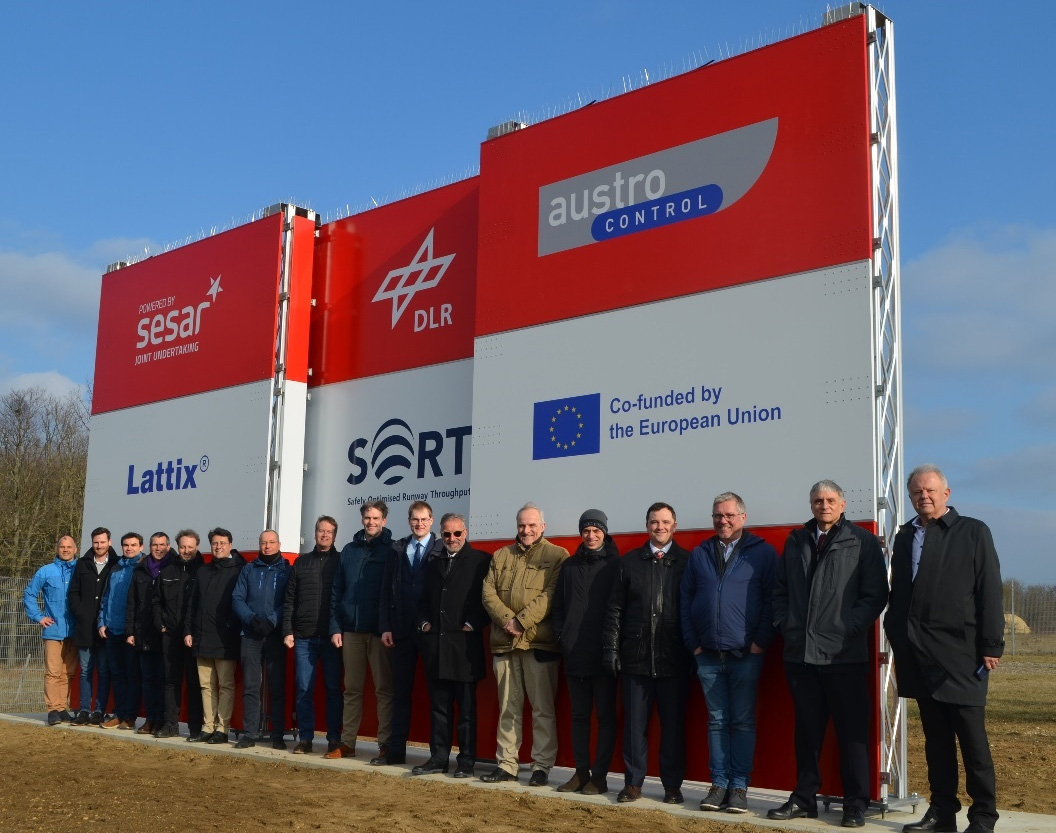SESAR partners have successfully demonstrated the effectiveness of a system using plate lines – parallel plates arranged one after another - to reduce wake vortices at large airports. Experts from Europe and beyond gathered in February for the SESAR2020 VLD3 Wave-2 SORT visitor day to hear about the results of testing plate lines and the safety benefits on offer.
Developed by the German Aerospace Centre (DLR), the plate lines were installed and tested at Vienna Airport in collaboration with Austro Control. The visitor day also included a visit to the plate prototype located at the testing ground Rauchenwarth, alongside presentations in the Vienna Tower.
Wake vortices constitute a safety concern and capacity limitation at major airports. They occur when two aircraft fly too close together, which may create turbulence that can destabilise the aircraft behind. Small and medium sized aircraft currently have to maintain a distance of 10 kilometres from larger aircraft flying ahead of them in order to ensure safety.
A plate line can be set up to attenuate the circulating vortices in front of a runway more quickly allowing the wake vortices to decay much more quickly. Testing revealed that wake vortex lifetime in ground proximity can be reduced by up to 37%. Plate Lines can be installed at busy airports in a timely manner to improve runway safety at large airports. In the near future, Plate Lines could be combined with the RECAT-EU-PWS procedure, which is expected to be approved by EASA (European Aviation Safety Agency) this year.
A video recording of the visitor’s day is available online.
More about SORT

This project has received funding from the SESAR Joint Undertaking under the European Union's Horizon 2020 research and innovation programme under grant agreement No 874520
